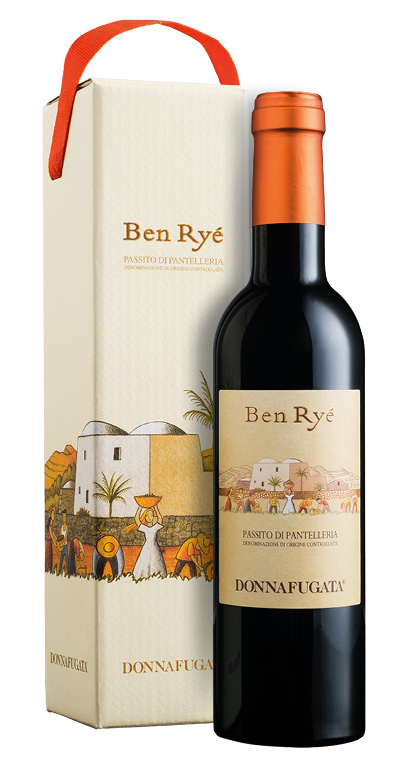Zibibbo
The term zibibbo derives from the Arabic word zibibb , which meant dried grapes. In reality, the name of the grape variety is Muscat of Alexandria and, as the name implies, it comes from Egypt or more generally from the Middle East area. It is an ancient variety born from the cross between white muscat and an ancient Greek grape: eftakoilo or heptakilo. For centuries it has been cultivated in the western part of Sicily, in particular in the Trapani area and on the island of Pantelleria. It is a typically Mediterranean variety, which loves heat, wind, endures dry, dry climate and adapts very well to poor and stony soils, especially if of volcanic origin. It produces clusters with an elongated shape, with rather large berries with a thick skin covered with bloom. It is an aromatic grape with a sweet taste, which traditionally was used both as a table grape and for making wine. Precisely for its persuasive aromas, the zibibbo was mainly used to produce raisins or to make straw wines. Especially the island of Pantelleria, where zibibbo has always been grown almost exclusively, has become famous precisely for the production of extraordinary straw wines.
In recent decades, in the face of a progressive decline in the consumption of sweet wines, the production of dry wines with a very interesting and pleasant taste has increased. It is white that expresses an intense and elegant bouquet, with aromas of orange blossom, citrus fruits, ripe fruit, tropical hints, nuances of aromatic herbs of the Mediterranean scrub and iodine memories. The sip is soft and persuasive, with a juicy and wide mouth center, well balanced by a lively citrus freshness, which closes with pleasantly sapid sensations. It is a perfect white to taste with seafood appetizers or shellfish. Zibibbo Passito is a wine of great charm, with aromas of candied citrus peel, dried apricot, dehydrated fruit, almond, dried fruit, honey and spices. On the palate it is rich and sweet, with complex and persistent aromas, which anticipate a refreshing finish. It is an ideal dessert wine to accompany classic Sicilian sweets or dry pastries.
Passito di Pantelleria DOC Ben Rye 2022 Donnafugata
The Passito di Pantelleria Ben Rye of Donnafugata comes from the vineyards located in the heart of the island of Pantelleria.
It is produced exclusively with Zibibbo grapes, harvested and selected only by hand. To the fermenting must, which takes place in stainless steel tanks at controlled temperature, the hand-squeezed raisins are subsequently added. During maceration, raisins release their extraordinary patrimony of sweetness, freshness and aromaticity. Ageing takes place in the same container...
View product pageTerre Siciliane IGT L'Ecrù 2022 Firriato
The Terre Siciliane Ecrù by Firriato was born in the vineyards of the Borgo Guarini estate, located in the Trapani municipality of Agro, in Sicily.
It is obtained from pure Zibibbo grapes, harvested and selected only by hand in the first ten days of September. The ripest and therefore sweeter bunches are placed to dry on the racks, while the remainder remains on the plant to be harvested in the best period of the late harvest. After drying, the grapes are separated from the stalk and infused into...
View product pageTerre Siciliane IGT Zibibbo Passito Zhabib 2023 Hibiscus
Terre Siciliane Zibibbo Passito Zhabib di Hibiscus was born in vineyards located in the Palermo municipality of Ustica, in the heart of western Sicily.
It is produced entirely with Zibibbo grapes, known locally as Moscatellone d'Alessandria, harvested and selected only by hand, left to dry partially in the sun on special racks and added to the fermenting must. Fermentation takes place in stainless steel tanks at controlled temperature.
The Hibiscus Zibibbo Passito Zhabib has a deep golden yellow c...
View product pagePassito di Pantelleria DOC Nes 2023 Pellegrino
The Passito di Pantelleria Nes di Pellegrino takes its name from the word which in Arabic means "miracle", referring to the conditions in which it is produced on the island of Pantelleria.
The soft pressing of the grapes is followed by fermentation with the addition of dried grapes on traditional racks built with strips of reeds called "cannizzi". This passito ages for 10 months in steel at controlled temperature.
In the glass, the Nes has a golden yellow tending towards amber, while the nose reca...
View product page



